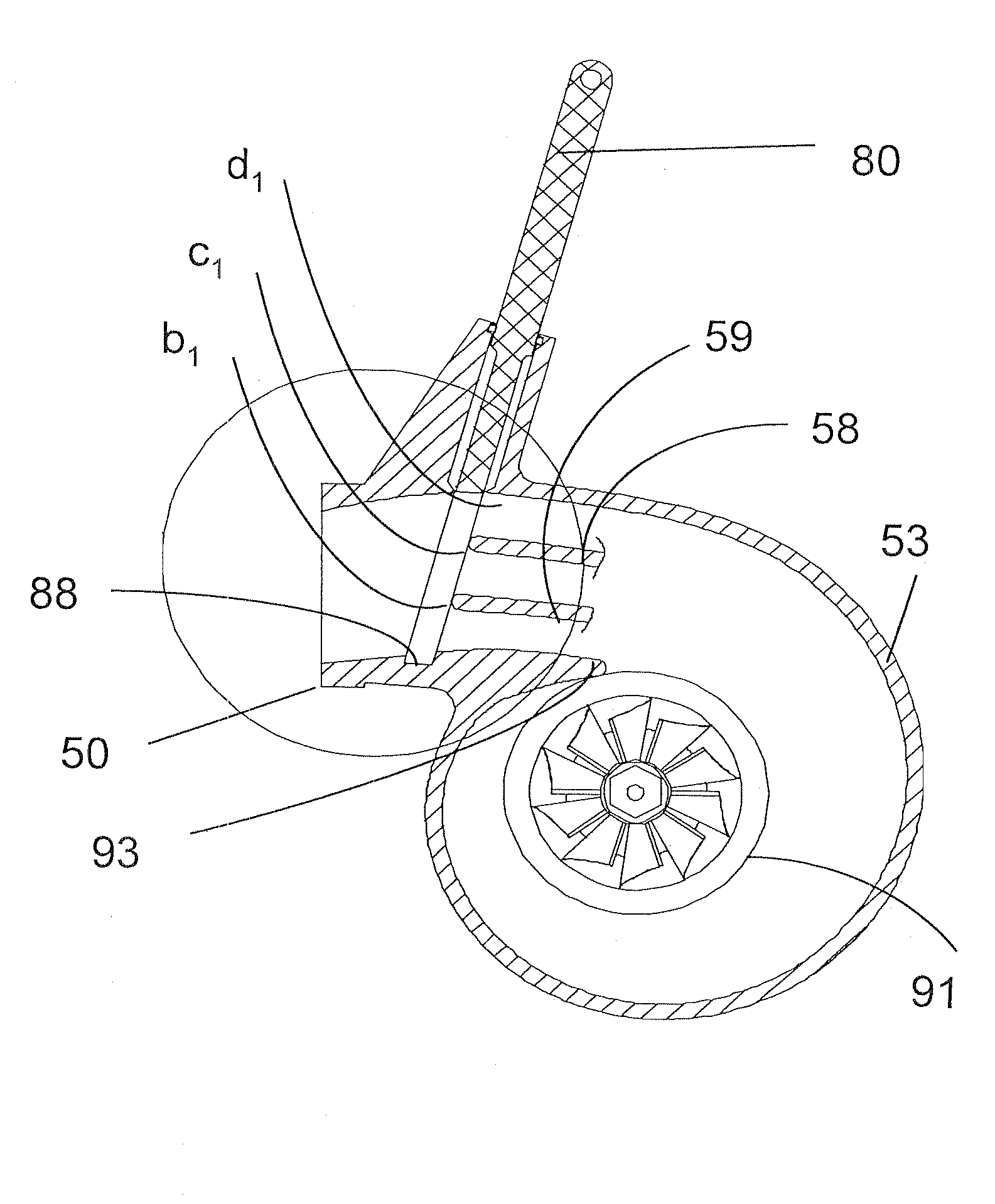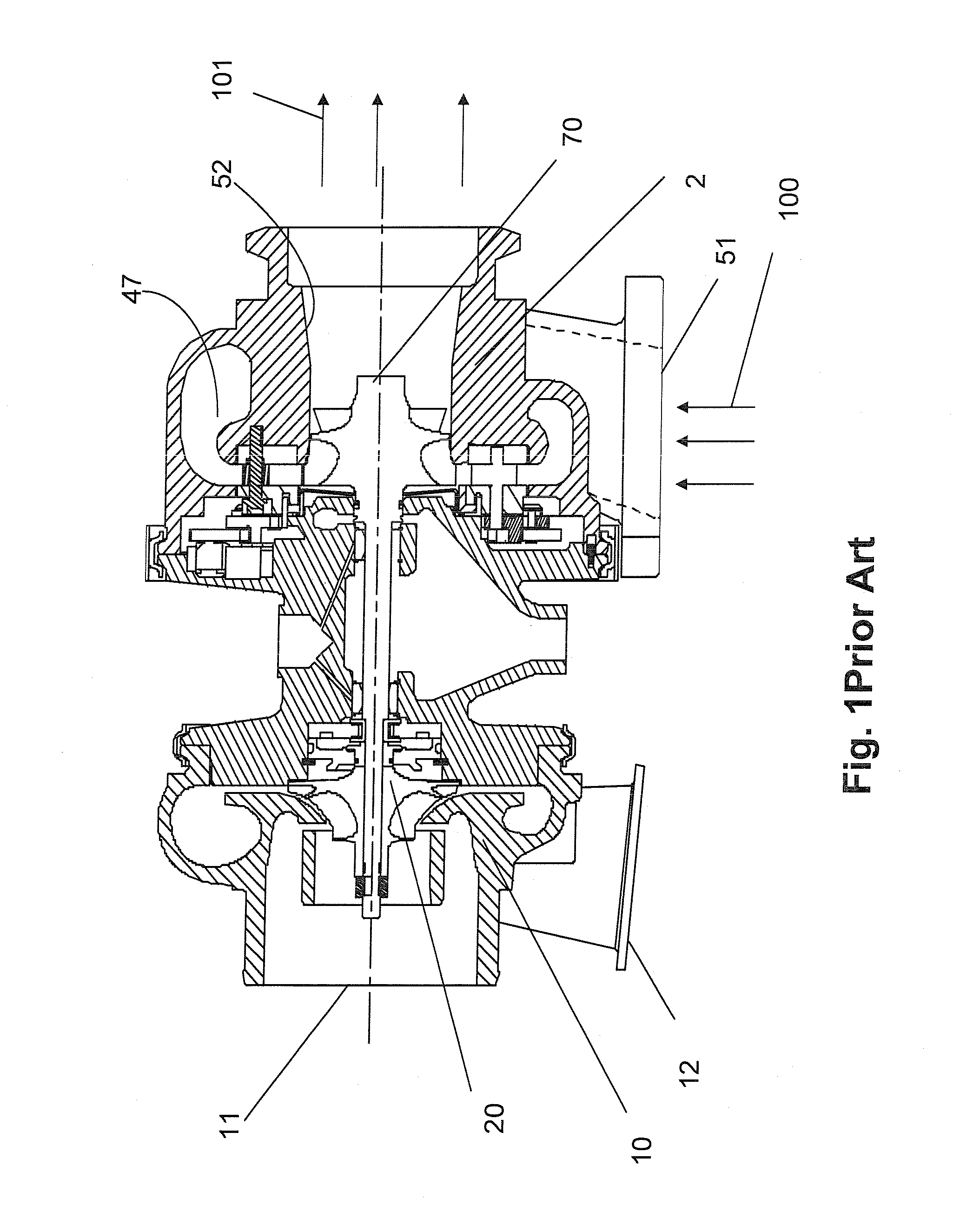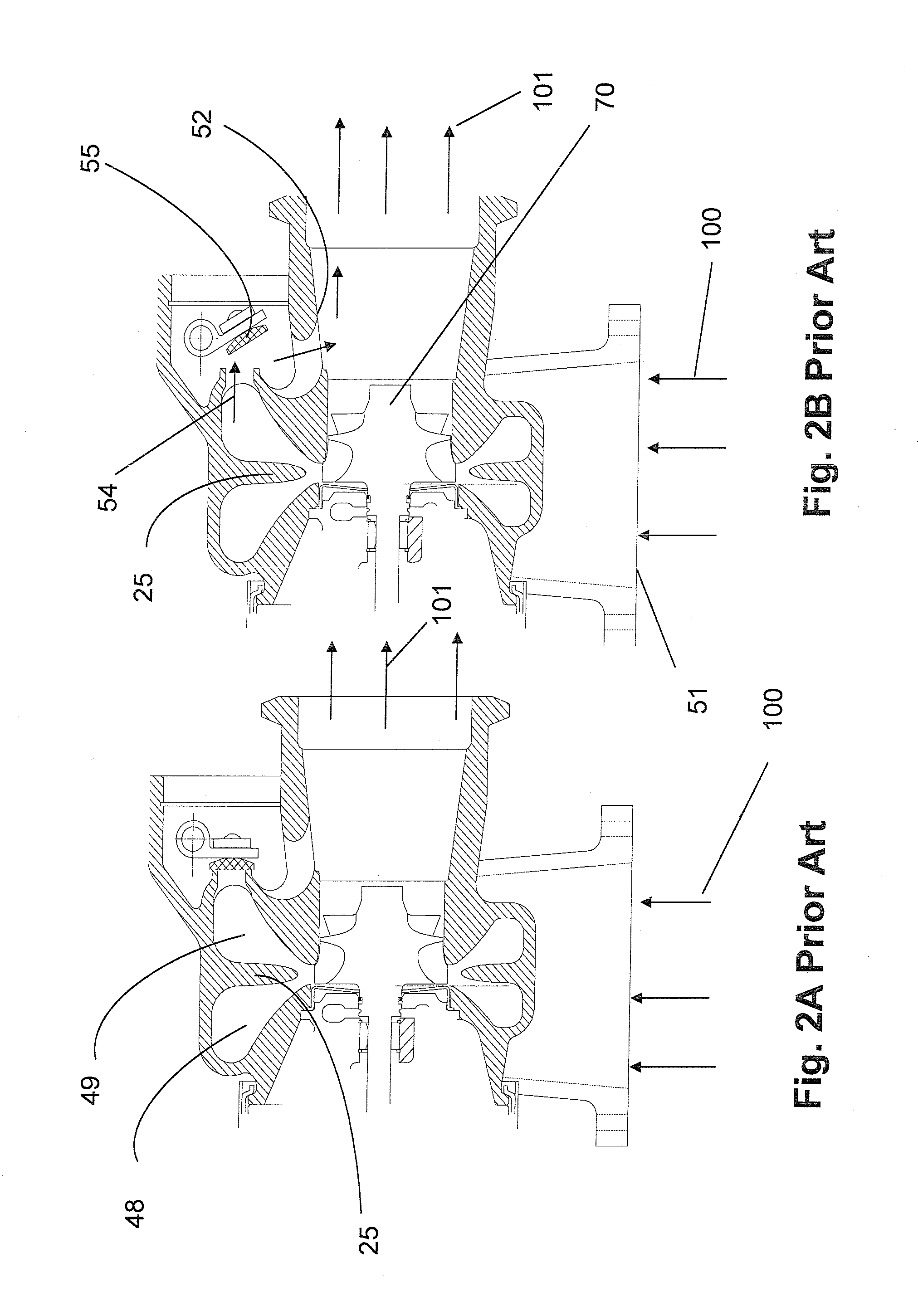Simplified variable geometry turbocharger with sliding gate and multiple volutes
a variable geometry, turbocharger technology, applied in the direction of machines/engines, stators, liquid fuel engines, etc., can solve the problems of limiting the boost level of the engine, the critical pressure ratio at which the valve opens is detrimentally affected, and the turbine power control characteristics are rudimentary and coarse. the effect of low cos
- Summary
- Abstract
- Description
- Claims
- Application Information
AI Technical Summary
Benefits of technology
Problems solved by technology
Method used
Image
Examples
first embodiment
[0051]The turbine housing component of the present invention consists of a plurality (greater than two) of volutes configured such that the entry to the multiple volutes is near the foot (51) and the exits of each volute are arranged around the base circle of the turbine housing. The volutes can be co-planar, or the volutes can cross over each other. What is important is that the volutes cumulatively deliver exhaust air to the circumference of the turbine wheel, terminating at a distance greater than or equal to a diameter of 106% the turbine wheel diameter, in an adjacent configuration.
[0052]In the exemplary first embodiment of the invention, as seen in FIGS. 12A and 12B, the turbine housing has an outer volute bound outwardly by the inner side (53) of the outer wall of the turbine housing. The inner wall of the outer volute is the outside of the first transverse divider wall (58). The “Z” axis walls are bound by walls close to the side walls which would exist in a typical turbine ...
third embodiment
[0061]In the invention, as depicted in FIGS. 15A and 15B, the flow of exhaust gas to the turbine wheel (70) is controlled by the rotation of a pivoting transverse divider wall (27) which is driven by an actuator driving an actuator rod (14) through a clevis (24). A clevis pin (25) transmits the actuator drive though an actuation arm (73), which in turn rotates and actuator shaft (72) about an axis (30).
[0062]The pivoting transverse divider wall (27) has a leading edge (28) and a trailing edge (29) and rotates about the axis (30) of the actuator shaft (72). For the sake of clarity the extreme positions of the actuation arm (73) are marked as “A” and “B”. In position “B” the pivoting transverse divider wall (27) has its leading edge (28) close to the center of the volute cross-sectional area, thus effectively directly the incoming flow of exhaust gas both under and over the transverse divider wall. This splitting of the exhaust flow forces the gas on the outside of the transverse divi...
PUM
 Login to View More
Login to View More Abstract
Description
Claims
Application Information
 Login to View More
Login to View More - R&D
- Intellectual Property
- Life Sciences
- Materials
- Tech Scout
- Unparalleled Data Quality
- Higher Quality Content
- 60% Fewer Hallucinations
Browse by: Latest US Patents, China's latest patents, Technical Efficacy Thesaurus, Application Domain, Technology Topic, Popular Technical Reports.
© 2025 PatSnap. All rights reserved.Legal|Privacy policy|Modern Slavery Act Transparency Statement|Sitemap|About US| Contact US: help@patsnap.com



